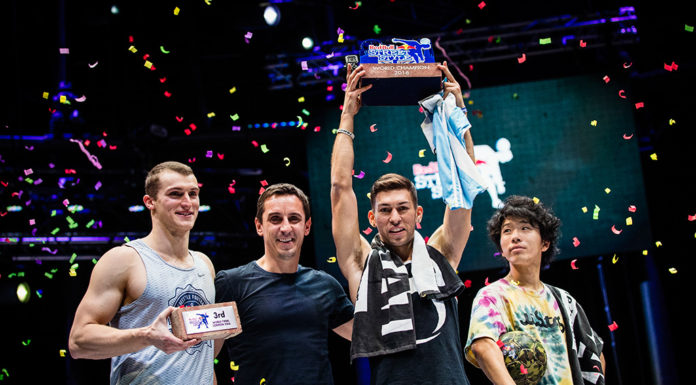Ever wonder what it’s like to be in one of MLS’ rowdiest supporters’ groups? We are taking fully immersive experiences with the league’s most passionate fanbases, continuing with reigning champions Atlanta United. Drawing some of the biggest crowds in the world, the four supporters’ group factions of Atlanta bring a culture, style, and party unlike any other.
In just their second year in the league, Atlanta United utilized a lethal mix of stellar on-field play, exciting young players, and exceptional fan support en route to hoisting the MLS Cup last December. After a bit of a rocky start to their 2019 campaign, United have caught fire — winning five of their last six matches by a combined score of 11-2 — and the fans have been behind them through it all.
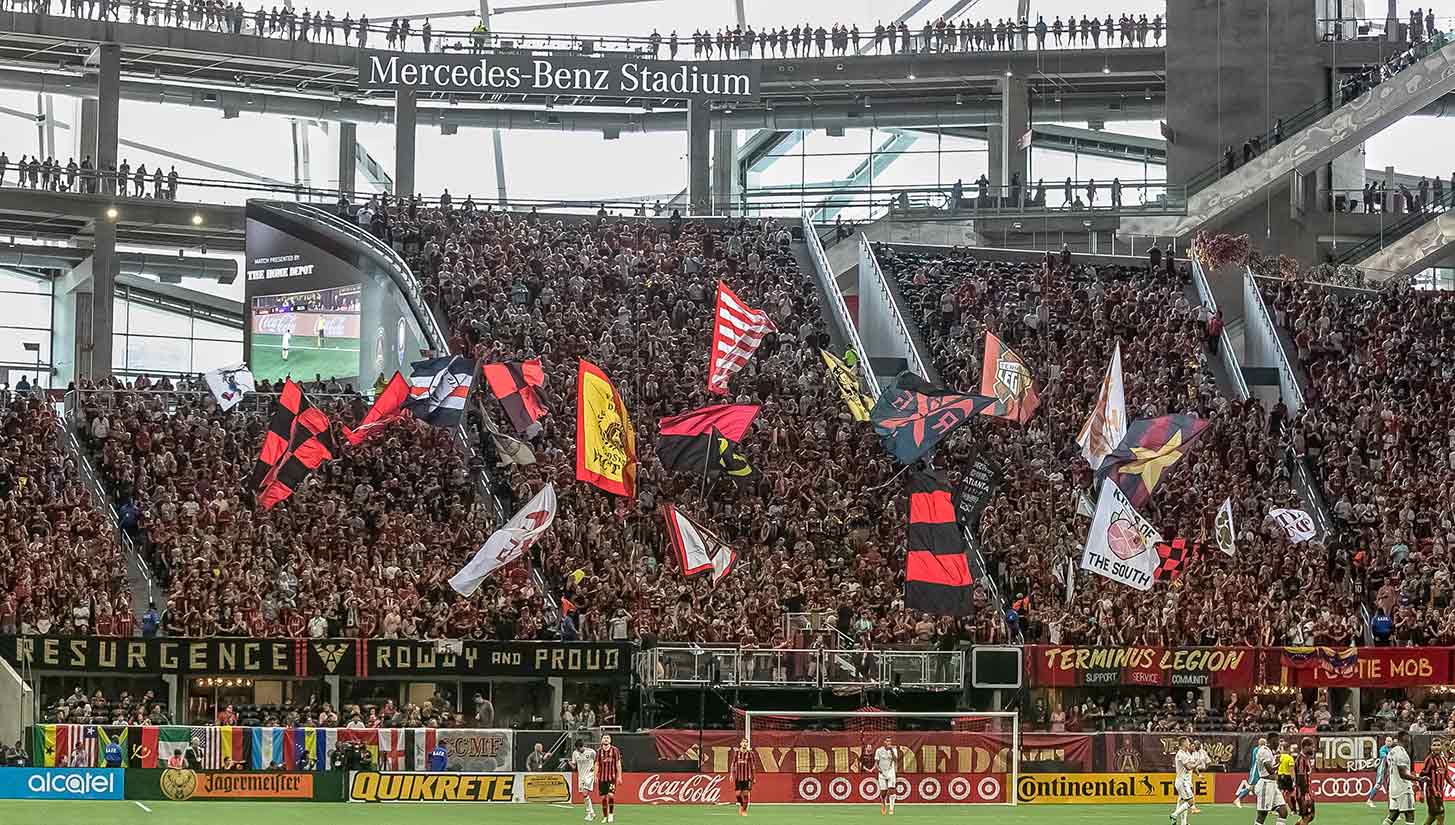
By far the largest soccer crowd in the United States, Atlanta’s 51,547 average attendance is good for 10th in the world, outpacing global giants including Manchester City, Liverpool, and Inter Milan.
The immense crowd sizes are largely due to the the beautiful game’s takeover of the A, as well as the four rabid Atlanta United supporters’ groups — Footie Mob, Terminus Legion, The Faction, and Resurgence. All four combine to make for one of the most raucous soccer atmospheres you’ll see anywhere.
Atlanta is a town where most people said MLS would never make it. Instead, the city has rallied around the game, drawing record-breaking audiences while bringing home championships — something its other major sports teams have failed to do in recent years. The success and energy that happens on each matchday are setting the city abuzz like no other team in the South.
Leadership and Community Impact
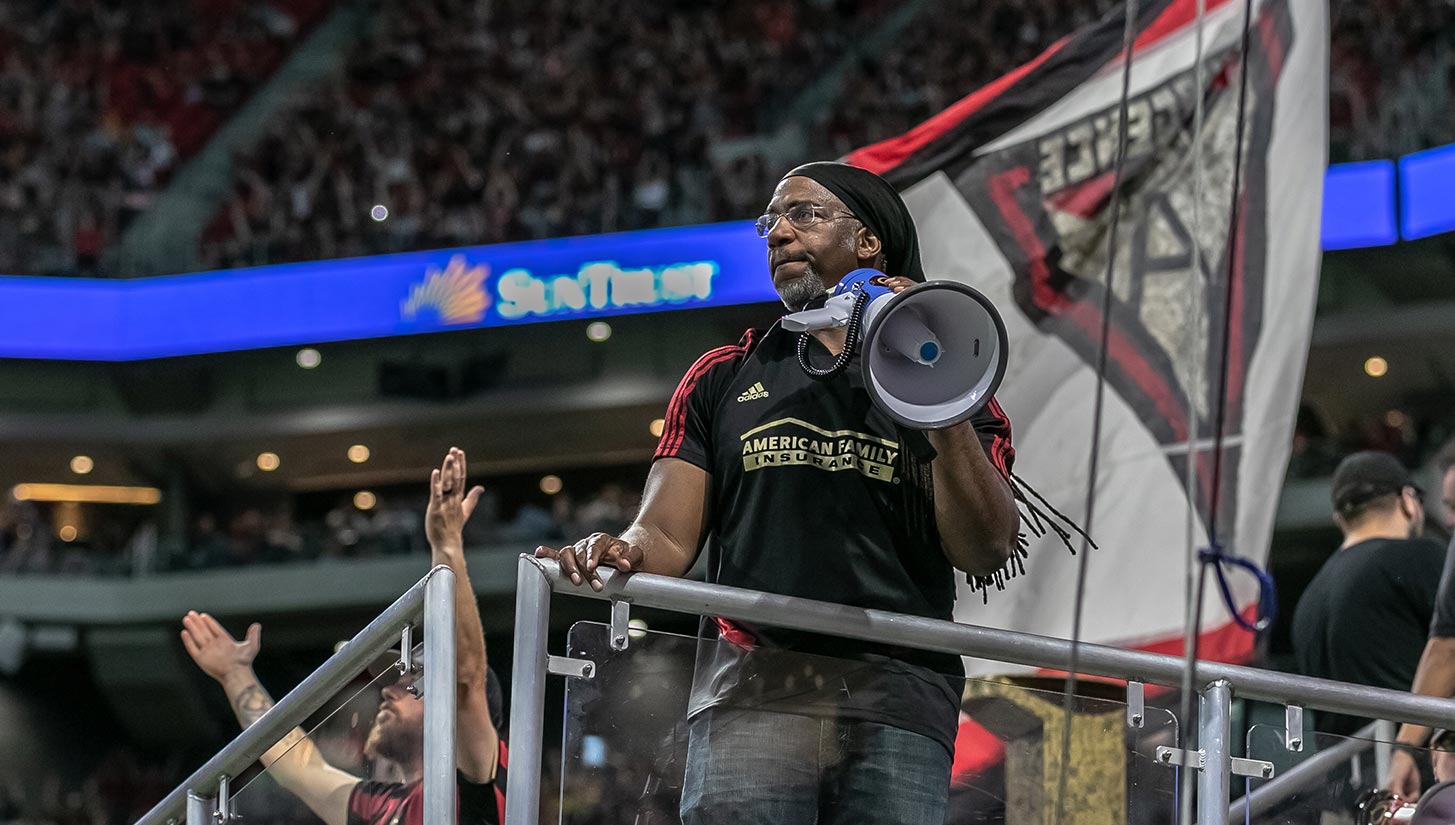
To get a firsthand experience of an Atlanta United match, I caught up with Reginald McKie, capo of Footie Mob, at the pregame tailgate prior to their derby match against Orlando City last weekend.
McKie is new to soccer and its culture like most people in the southern United States. He was introduced to the game through AFC Bournemouth about four years ago.
“Their fight and promotion from two lower leagues while avoiding liquidation really struck a chord,” McKie said. “I love the underdog and little Bournemouth have huge heart and will upset anyone in the ‘big six’ — ask Liverpool, Arsenal, Tottenham, and Chelsea!”
A play off of legendary Atlanta hip-hop group Goodie Mob, Footie Mob’s inception began with Curtis Jenkins and Stefan Kallweit, who currently serve as the group’s president and vice president, respectively. Starting off as a “what if” hypothetical conversation, Footie Mob evolved into a tailgate and ultimately into a full-blown supporters’ group in a short span of time.
Their biggest mission — aside from bringing the ruckus to every single United match they can get to — is to both diversify the soccer fan base in Atlanta and bring Atlanta culture to MLS. The group works closely with Atlanta-based organization Soccer in the Streets to help over 5,000 underserved youth through soccer training, character development, mentoring, and employability programs.
The Matchday Experience
Headed into their derby match against Orlando City, I knew things were going to be intense. I got to the pregame festivities three hours before the match around 11:30 a.m., although there were some fans there as early as 9:30. We all congregated in a parking lot three-quarters of a mile outside the Mercedes-Benz Stadium known as the Gulch, to do what southerners do best — tailgate. It may be a common practice across the country, but no one does it like we do in the south.
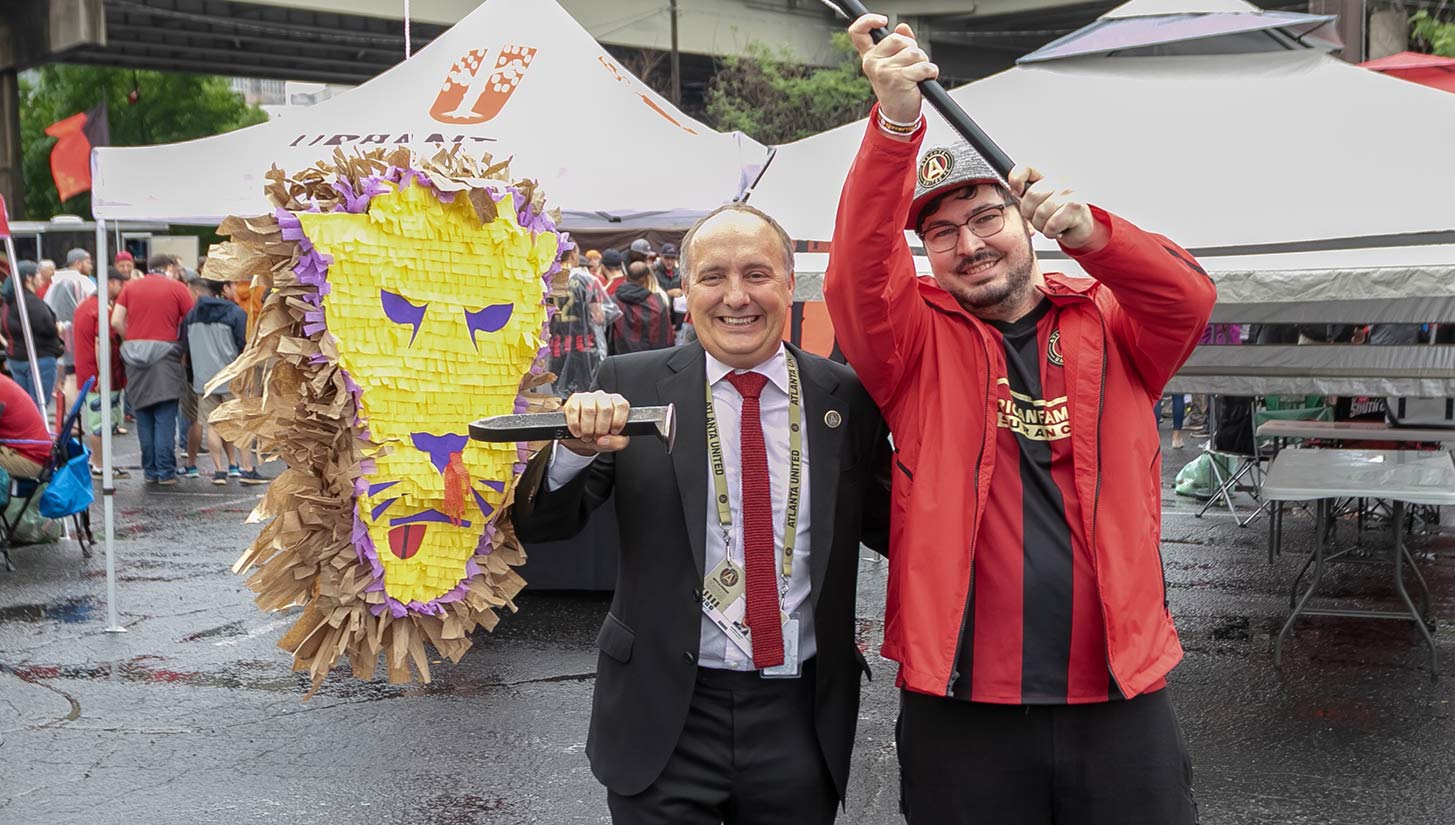
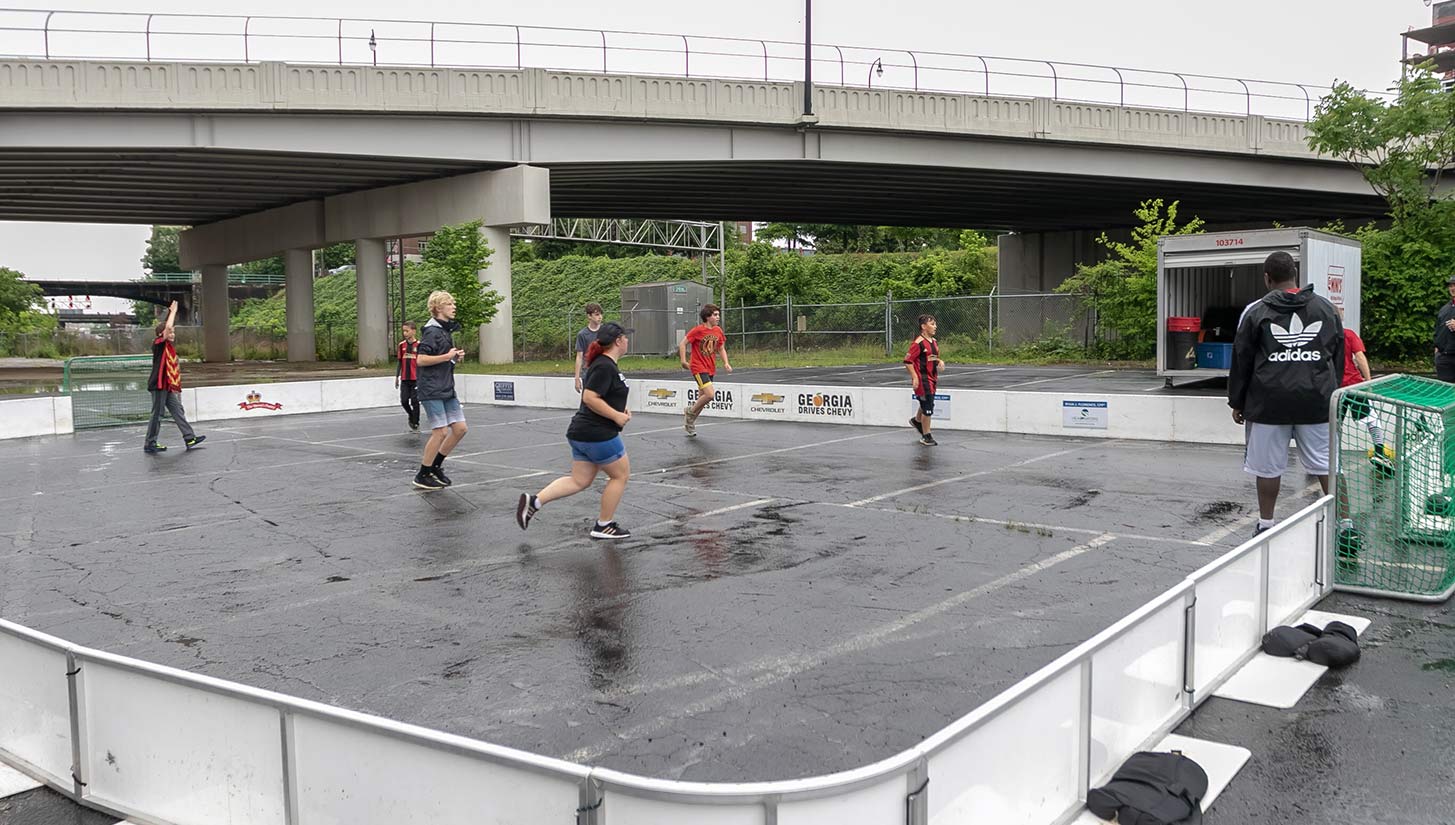
Each supporters’ group had different food trucks or catered food at their section, all of which switch up for every game. Spread throughout the Gulch were grills of all shapes and sizes and different drinks that compete with most upscale bars.
At the Footie Mob camp, we had food from El Ponce, a nearby Mexican restaurant. Chicken empanadas, pork and veggie tamales, and rice and beans made for quite the pregame spread. Elsewhere at Terminus Legion was the Meatballerz food truck, which, as its name suggests specializes in meatball subs. United fans eat good.
Aside from the food, the Gulch was like a massive block party. Rondo kick abouts, drinking games involving many a shotgunned beer, DJs, dancing, face painting, and merch trading were rampant through the parking lot. Darren Eales, Atlanta United President, walked through scene, posing for photos and chatting with tailgaters. Over at the Terminus Legion camp, supporters could write letters to players. This week it was Alec Kann and Michael Parkhurst, but the list of players, like the food, switches for every match.
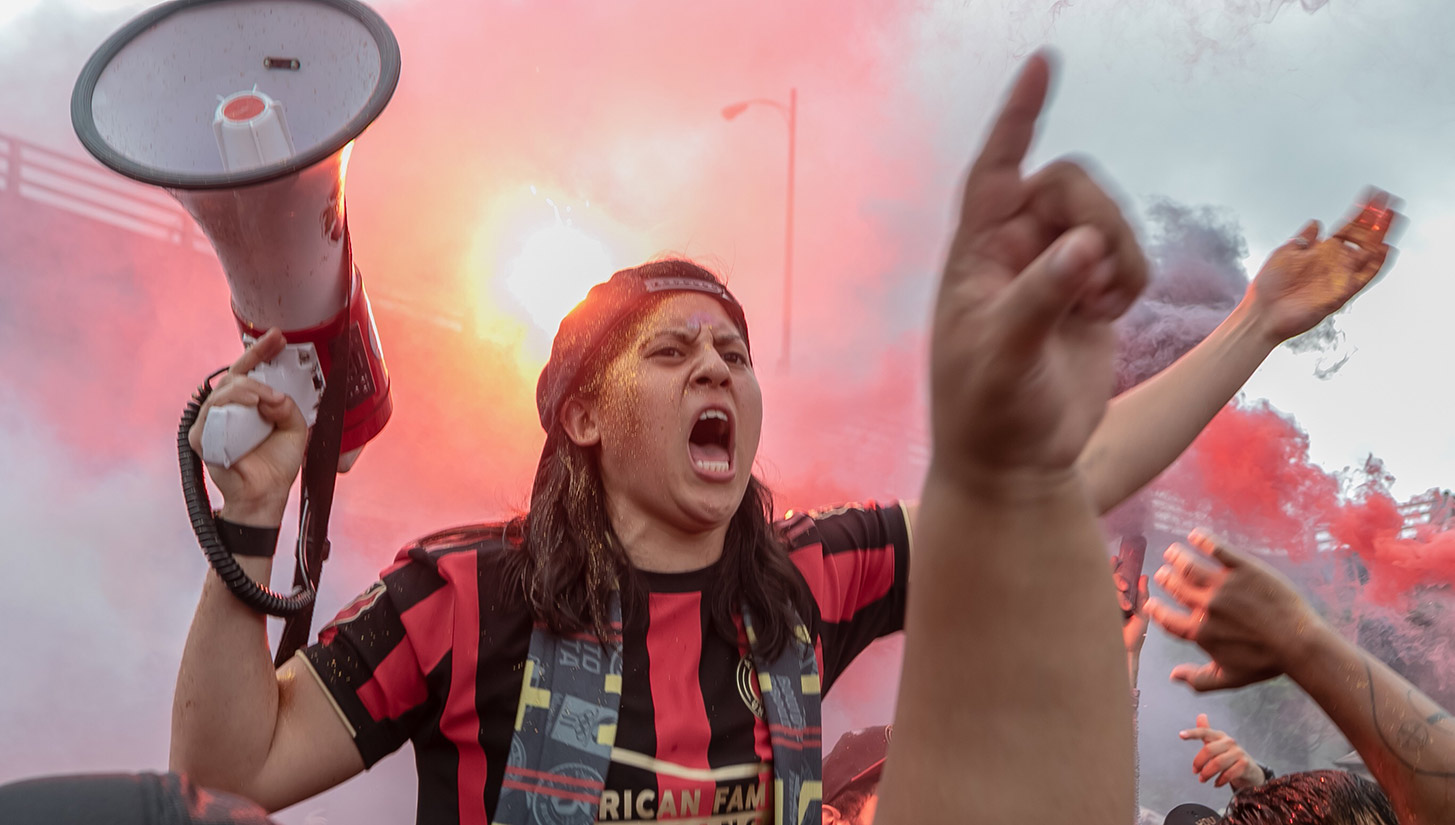
Most of the tailgate wraps up about 60 minutes before the game, which is when things really shift to another gear. All four supporters’ groups come together to embark on the three-quarter mile march to the immaculate Mercedes-Benz Stadium. The march is full of horns, drums, and smoke, and if you arrive at the stadium without glitter on yourself, did you really even participate?
Once inside Mercedes-Benz, we enter through the east end of the stadium into the section known as the Hype Depot — paying tribute to Atlanta United owner Arthur Blank’s megastore Home Depot, which he founded in 1978.
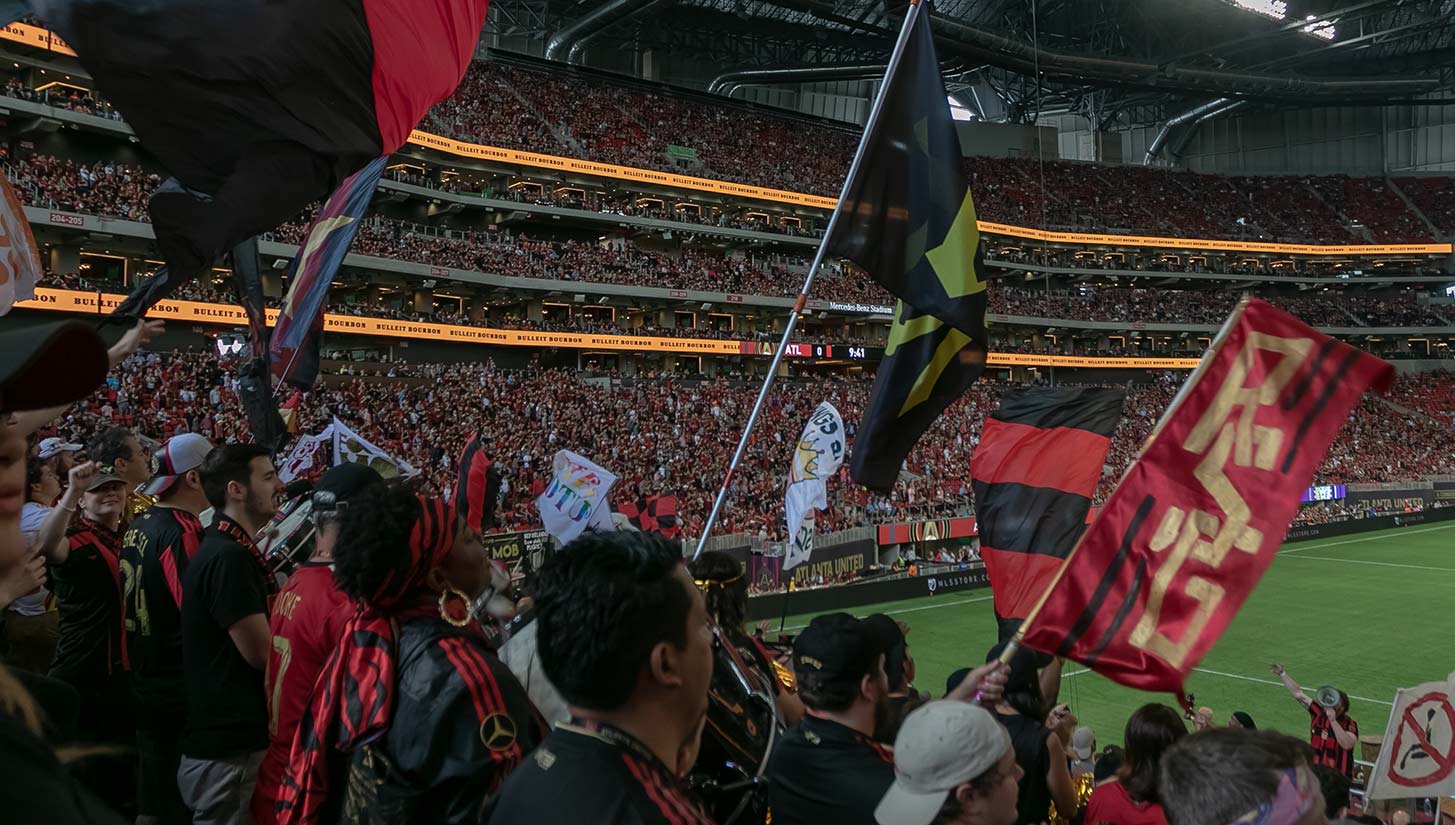

We waited for the arrival of the golden spike, which represents Atlanta’s history of being a major railroad hub in the 1800s, connecting the port of Savannah to the midwest. One of the club’s missions is to unite the city just as the early railroad spikes united lines from Atlanta to the rest of the country.
Before every match, a representative from each supporters’ group helps carry in the Golden Spike that players and fans signed prior to the game. Once they bring it down to the capo platform, a local Atlanta celebrity ceremoniously drives in the spike to the chants of “A-T-L!”
Dominique Wilkins, Evander Holyfield, 2 Chainz, Goodie Mob, and Outkast’s Big Boi have all hit the spike in the past, and this time it was owner Blank’s turn.

Prior to kickoff, Atlanta hip-hop artist Archie Eversole’s “We Ready” blasts through the stadium eliciting goosebumps from everyone with a pulse. All sections of supporters link arms for the ubiquitous “swag surf,” singing along to the anthemic lyrics of Archie.
Seconds before kickoff a train horn is blown, continuing the railroad hub motif. Almost like clockwork, the capos instantly begin the 90-minute directing of the supporters. Atlanta native and Minnesota Timberwolves guard Josh Okogie made an appearance in the capo platform to help lead chants as well. As the game went on, each chant seemingly got louder and louder, and amongst the crowd of 68,152, it became deafening.
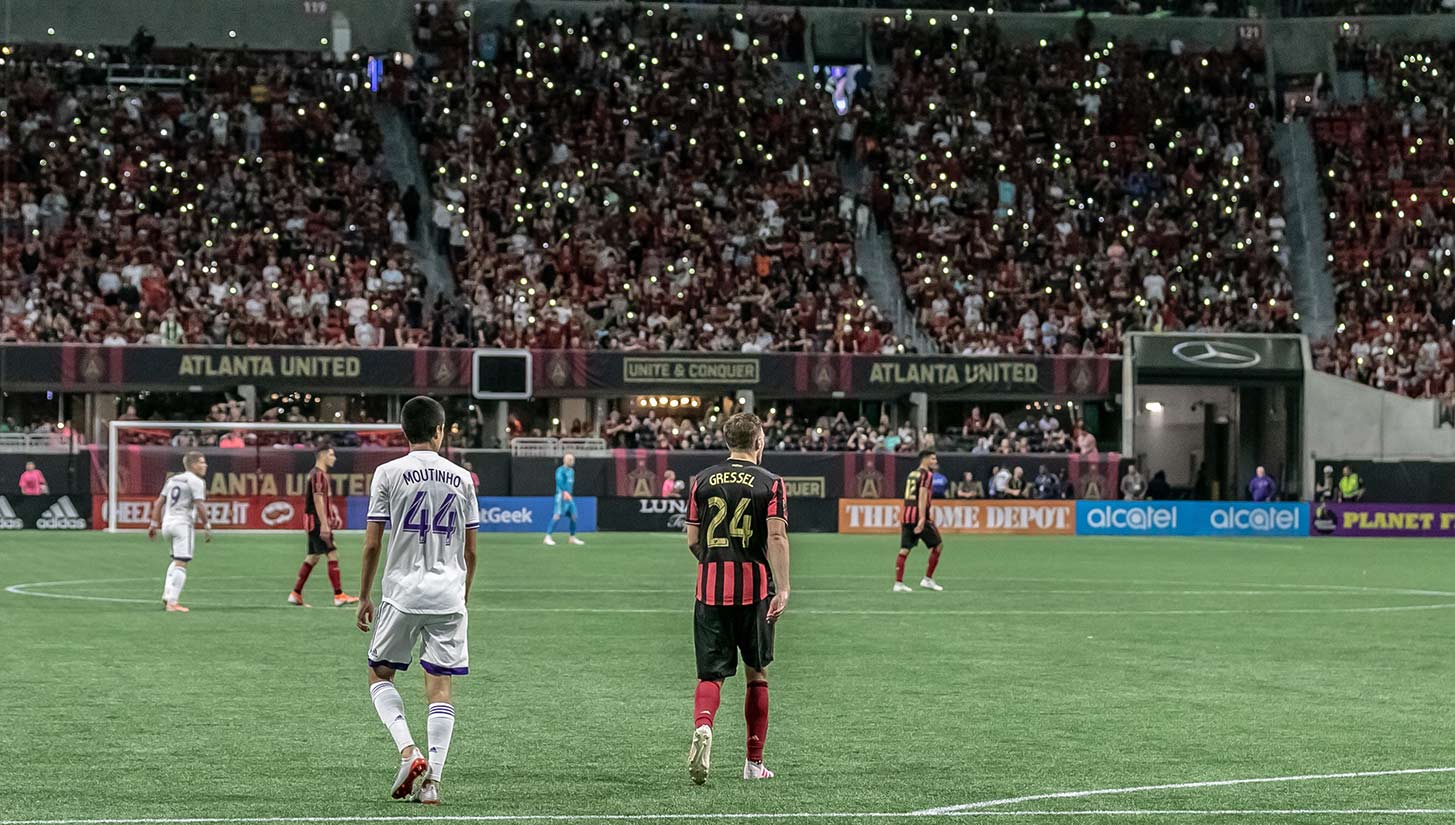
Atlanta supporters have adopted the Viking clap made famous by Iceland’s national team. In the 40th and 80th minutes, the capos lead the entire stadium in what has become known as the A-T-L Clap. Atlanta supporters also have adopted the tradition of using flashlights from phones to light up the stands. Referred to as the fireflies, the bright lights come out between the 65th and 80th minutes. It is truly one of the most breathtaking displays at a sporting event.
After the match concluded, we exited the stadium to gather under the giant Falcon statue adorned with the scarf of the month. Whether the club wins, loses or draws (in this case it was a win), the drums, singing, and horns lead the supporters back to the Gulch, where the party picks back up until the late hours of the night.
More games of Rondo, heated discussions about the game, and dance parties all pick right back up at the Gulch until the fans tire out and head home — or to eat. Just down the road is the world-famous Varsity, where supporters indulge themselves in pimento and cheese hamburgers and frosted oranges.
In just two years of existence in MLS, the Atlanta United supporters’ groups are showing the world that soccer will thrive in this city. The experience inside Atlanta United’s Mercedes-Benz Stadium is on par with that of larger European clubs, and with a fanbase that is still fairly new to the game, the culture and traditions can only continue to grow.
Photography by Dave Wiliamson for Urban Pitch.












